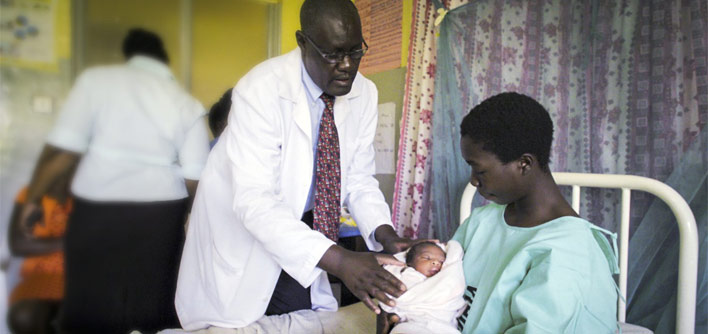
Maternal and Child Health
Reproduced from the PATH website at www.path.org 7-15-19.
About 830 women die from pregnancy or childbirth related complications around the world every day. Of the 130 million babies born worldwide each year, about 2.7 million do not survive the first four weeks of life. The simple act of better birth spacing by expanding availability of contraception can reduce maternal mortality by 30% and child mortality by 20%.
According to the World Health Organization (WHO), six solutions to the most preventable causes of deaths of children under five include:
- Immediate and exclusive breastfeeding
- Skilled attendants for antenatal, birth, and postnatal care
- Access to nutrition and micronutrients
- Family knowledge of danger signs in a child’s health
- Improved access to water, sanitation, and hygiene
- Immunizations
Helping Babies Breathe
Approximately half of all newborn deaths occur in the first 24 hours after childbirth. Tragically, nearly 80% result from three preventable and treatable conditions: complications during childbirth (asphyxia), newborn infections and complications from prematurity.
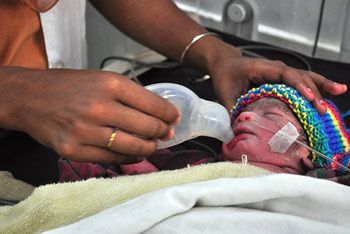
Helping Babies Survive (HBS) is an initiative of the American Academy of Pediatrics, in collaboration with USAID, Laerdal Global Health, Johnson & Johnson, Save the Children, and a number of other global health organizations. The initiative is a suite of three educational training programs designed to reduce newborn mortality in resource-limited countries, where the majority of neonatal deaths occur: Helping Babies Breathe (HBB), Essential Care for Every Baby (ECEB) and Essential Care for Small Babies (ECSB). The HBS programs pair evidence-based medicine with a unique training methodology that together address these leading causes of neonatal mortality.
Helping Babies Breathe (HBB) trains health workers in the essential skills of neonatal resuscitation and newborn care. In just the first five years after HBB was implemented across the globe, a clear result emerged: the curriculum is helping to save the lives of the approximately 10 million babies born each year who need assistance breathing at birth. Since its launch in 2010, HBB has been implemented in 77 countries. More than 300,000 health care providers have received training, and approximately 52 countries now have government-led and coordinated HBB programs. An impact study in Tanzania showed that HBB can reduce neonatal mortality on the first day of life by 47% and fresh stillbirth by 24%.
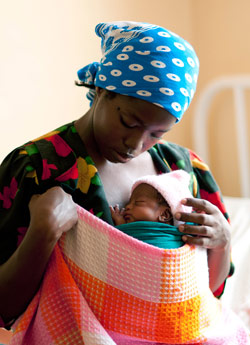
Essential Care for Small Babies (ECSB) teaches the special care needed for small or premature babies born in low resource areas. Birth attendants and mothers learn how to keep the babies warm by skin-to-skin wrapping, also known as kangaroo mother care (KMC), and keeping them nourished with breast feeding where possible or alternative feeding methods.
In Malawi, which has the highest rate of premature births in the world (181 babies out of 1,000), there is now a KMC center in every district. Over the ten years from 2005 to 2015, the number of babies dying before their first birthday fell from 72 out of 1,000 to 43. In Cameroon, mortality of premature babies has dropped by around 30%. According to a 2016 analysis by Cochrane, a global network of researchers, studies of KMC have found it to reduce mortality in pre-term newborns by 33%. WHO estimates that KMC has the potential to save as many as 450,000 lives a year.
“When Renuka Hadapad gave birth to triplets on 25 October 2016 in Koppal, India she saw little reason to celebrate. The babies were all girls. With two daughters already and a culture favoring male children, Renuka and her husband, Somappa, had hoped for a son.
“Moreover, despite a seamless birth in the district hospital, the triplets were born each weighing less than 1500 grams (3.3 lbs.) – making it difficult for them to nurse, stay warm or gain weight. Though Somappa and Renuka were heartbroken, the triplets needed their support to survive…
“‘The care and support given by the staff of the district hospital made me feel like this is my second home,’ said Renuka, who took to caring for the triplets nonstop while her husband worked. After 28 days in the hospital, the babies – called Mahadevi, Shrushti and Lakshmi – were discharged.
“Returning home however posed new challenges. Kangaroo Mother Care is only effective when done for long periods of time until a baby weighs over 2500 grams (5.5 lbs) or no longer wants to stay confined in skin-to-skin contact. Finding the time for three babies is no simple feat.
“A team of community health workers kept Renuka’s spirits up. And then, with her husband away, she turned to her sister, and moved into her home. Between them, the women gave each of the babies at least 9 hours of skin-to-skin care every day for more than four months.
“On 7 March 2017, the triplets crossed the 5.5 lbs mark…
“For Renuka and family, 30 October 2017 was a day to remember. The Kopoal district hospital where the triplets were born hosted a birthday party with local partners — the Government of Karnataka, St John’s National Academy of Health Sciences and Karnataka Health Promotion Trust — to celebrate their successful first year.
“‘Don’t discriminate against girl children. They are a gift,’ says Renuka, as she retold her journey of change throughout the year. Somappa, also joined his wife in acknowledging the support given by everyone to save and care for his daughters.
“Today, Renuka is the district’s kangaroo mother care champion, and inspires other parents to not only adopt the technique but also to care for girl children.”
“Kangaroo Mother Care” programme in India helps premature triplets thrive
WHO.int
Clean Water and Sanitation to Reduce Child Mortality
Diarrhea kills 2,195 children every day – more than AIDS, malaria and measles combined. It is the second leading cause of death among children under five. Despite these sobering statistics, strides made over the last 20 years have shown that, in addition to rotavirus vaccination and breastfeeding, diarrhea prevention focused on safe water and improved hygiene and sanitation is not only possible, but cost effective: every $1 invested yields an average return of $25–$50.
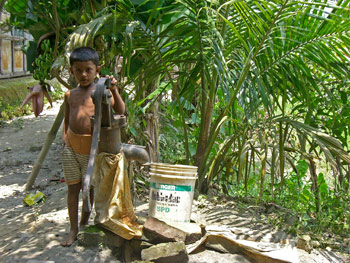
Proven ways to save lives from diarrhea include:
- Vaccinating for rotavirus
- Providing safe water, adequate sanitation and human waste disposal
- Promoting hand washing with soap
- Breastfeeding to reduce exposure to contaminated water
- Appropriate treatment with oral rehydration therapy and antibiotics
- Training health care providers and community health workers on diarrhea treatment
- Educating mothers and caretakers about caring for ill children and when to seek medical assistance
- Building laboratory diagnostic capability and identifying the causes of diarrhea
Saving the Lives of Mothers
Childbirth can be a risky experience for women, especially in developing countries where 99% of all maternal deaths occur. About 830 women die from pregnancy or childbirth related complications around the world every day. Women in developing counties have, on average, many more pregnancies than women in developed countries, and their the lifetime risk of maternal death – the probability at age 15 that they will eventually die from a maternal cause – is one in 180 vs. one in 4,900 in developed countries. That means women in poorer countries are 27 times more at risk of dying from pregnancy, childbirth, or immediate post-partum complications than women in developed countries. Maternal mortality is also higher in women living in rural areas and among poorer communities, and adolescent girls face a higher risk of complications and death as a result of pregnancy than other women.
Women in poorer countries are 27 times more at risk of dying from pregnancy, childbirth, or immediate post-partum complications than women in developed countries.
Between 1990 and 2015, maternal mortality worldwide dropped by about 44%, but it is still unacceptably high. It is estimated that in 2015, roughly 303,000 women died during and following pregnancy and childbirth. Almost all of these deaths occurred in low-resource settings, and most could have been prevented. Skilled care before, during and after childbirth can save the lives of women and newborn babies.
One of the goals under Sustainable Development Goal #3 is to reduce the global maternal mortality ratio to less than 70 per 100,000 births, with no country having a maternal mortality rate of more than twice the global average.
The major complications that account for nearly 75% of all maternal deaths are severe bleeding (mostly bleeding after childbirth), infections (usually after childbirth), high blood pressure during pregnancy (pre-eclampsia and eclampsia), complications from delivery, and unsafe abortion. The remainder are caused by or associated with diseases such as malaria, and AIDS during pregnancy.
The Importance of Contraception
The simple act of better birth spacing and meeting the unmet need for contraception can reduce maternal mortality by 30% and child mortality by 20%. A series of profiles by the Bill and Melinda Gates Foundation on women whose lives have been change by contraception includes the story of Khadeja in Bangladesh:
“Khadeja is 28 and lives with her husband, son and mother-in-law.
“Khadeja and her husband met in the garment factory where they both work. After marrying they decided to wait for a year before starting a family, so Khadeja started taking the pill. She was able to get it from a family planning centre run by Marie Stopes International, based in the factory where she works.
“Khadeja took the pill until she and her husband decided the time was right to have a child. When she returned to work after having her son she spoke with one of Marie Stopes International’s family planning nurses, decided the pill was the best option for her, and started taking it again.
“Because they are able to control the size of their family. Khadeja and her husband have a good quality of life today and they’re able to plan their family’s future.
“‘Without the pill we’d have lots of children by now and it would have been impossible for my husband to support us. Life’s not so tough when you’ve got only one child. Our family is small but we are happy.’”
Increasing contraceptive use in resource poor countries has cut the number of maternal deaths by 40% over the past 20 years, merely by reducing the number of unintended pregnancies. By preventing high-risk pregnancies, especially in women with high birth numbers and those that would have ended in unsafe abortion, increased contraceptive use reduced the maternal mortality ratio – the risk of maternal death per 100,000 live births – by about 26% in little more than a decade.
Increasing contraceptive use in resource poor countries has cut the number of maternal deaths by 40% over the past 20 years.
A further 30% of maternal deaths could be avoided by fulfillment of unmet need for contraception. The benefits of modern contraceptives to women’s health, including non-contraceptive benefits of specific methods (e.g. condoms for protection against HIV), outweigh the risks. Contraception can also improve perinatal outcomes and child survival, mainly by lengthening intervals between pregnancies. In resource poor countries, the risk of prematurity and low birth weight doubles when conception occurs within 6 months of a previous birth, and children born within 2 years of an elder sibling are 60% more likely to die in infancy than are those born more than 2 years after their sibling.
The Gates Foundation profiles also include the story of Tigist, Ethiopia:

“Tigist is a community-based distributor in Ethiopia’s capital Addis Ababa. Every day she travels around her community making sure women can access family planning and other vital sexual and reproductive health services. She meets women like Zeitu, a 30 year old mother of four. Zeitu gave birth to her first child at 14 having been sold into marriage. The money Zeitu makes as a seamstress is barely enough to feed the family she has. And she’s adamant that she can’t afford to have anymore children. Tigist’s regular visits mean Zeitu can access contraception and choose the size of her family.”
FP (Family Planning) 2020 is collaborative organization working with governments, civil society, multilateral organizations, donors, the private sector, and the research and development community to enable 120 million more women and girls to use contraceptives by 2020. FP2020 is based on the principle that all women, no matter where they live, should have access to lifesaving contraceptives. Achieving the FP2020 goal is a critical milestone to ensuring universal access to sexual and reproductive health services and rights by 2030, as laid out in Sustainable Development Goals #3 and #5.
FP 2020’s 2017-2018 report shows that in the world’s 69 lowest-income countries, more than 317 million women and girls are now choosing to use a modern method of contraception. This is 46 million more users than in 2012, the year FP2020 was launched, and is 30% higher than the historic trend. FP2020 estimates that between July 2017 and July 2018, the use of modern contraception prevented more than 119 million unintended pregnancies, 20 million unsafe abortions, and 137,000 maternal deaths.
One of FR2020’s spotlighted cases is that of Burkina Faso.
“The population of Burkina Faso is very young: almost half of Burkinabé are under the age of 15, and two-thirds are under the age of 25. Burkina Faso has made the demographic transition the centerpiece of its national development strategy. That means investing in family planning and ensuring that young people have access to contraception. The government focal point for FP2020, Dr. Ida Salou Kagone, is also the Technical Secretary in Charge of Accelerating the Demographic Transition.
“The National Acceleration Plan for Family Planning 2017–2020, which was developed in consultation with youth representatives, clearly identifies the factors that are holding young people back. The plan calls for:
- “Easy access for young people to the full range of contraceptive methods, including implants and IUDs
- “Sex education for young people either in or out of school
- “Opportunities for young people to remain involved as the national family planning program is implemented
“The plan also calls for annual ‘zero pregnancy’ campaigns to be conducted in schools. The campaigns are intended to help adolescents understand the importance of sexual and reproductive health, including family planning, and to make positive life choices like staying in school and graduating.”
External Stories and Videos
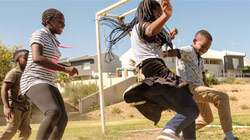
A Future for the World’s Children?
WHO–UNICEF–Lancet Commission Report
Our understanding of progress on child health and wellbeing must give priority to measures of ecological sustainability and equity to ensure we protect all children, including the most vulnerable.

Why America’s Black Mothers and Babies Are in a Life-or-Death Crisis
Linda Villarosa, The New York Times Magazine
The answer to the disparity in death rates has everything to do with the lived experience of being a black woman in America.
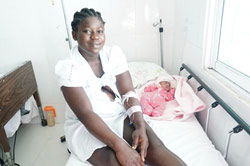
Bringing Health Care on Foot to Women in Haiti
Devex
The Caribbean nation is one the most dangerous places to be pregnant and give birth in the Western hemisphere. Mobile clinics operated by grassroots community development organization H.O.P.E. are a crucial lifeline for poor people who may otherwise trek nine hours to reach a clinic.
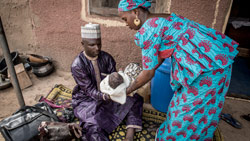
Rethinking Innovation in Maternal and Child Health in Africa: Five Case Studies
Koki Agarwal, STAT
Traditional barbers talking to new mothers about immunization; support groups organized for pregnant women. Seemingly small changes like these in everyday practices are often the truly innovative and most effective solutions to global health challenges.

Catalyzing Collaboration
FP2020, Progress Report
In the past six years, this collaborative effort has helped to expand rights-based family planning programs and voluntary contraception to millions more women and girls than would have been thought possible just a decade ago.
